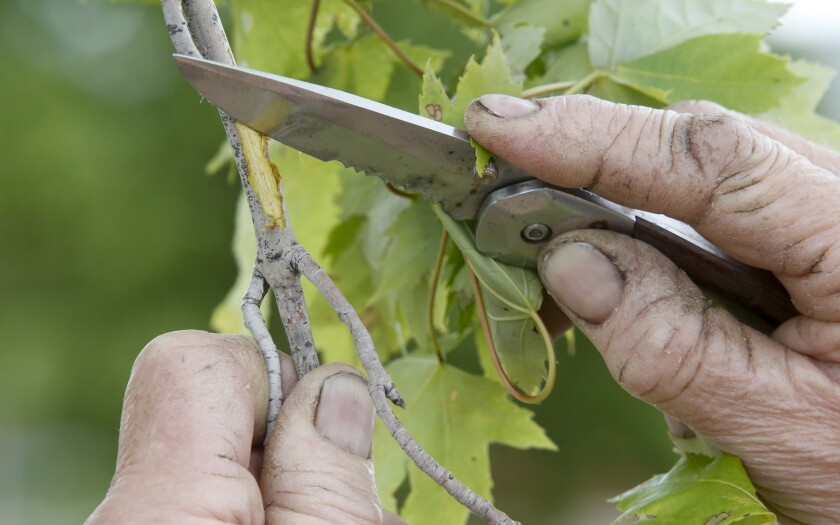I promise I’ll return to more uplifting garden columns very soon, but the mailbox has been filled with photos of dead trees and dying limbs from homeowners wondering if there’s a new tree disease spreading across the land.
The main culprit was winter injury. Like every spring and summer, there are side issues, such as anthracnose causing some ash leaves to drop, cankerworms and assorted insects nibbling leaves and, of course, rabbits that were well-fattened on their winter smorgasbord.
The underlying cause of much of the dieback now evident was this past “test winter” that was deeper and longer than some of our trees and shrubs could withstand. What makes a tree or shrub able to survive winter in a specific area? Its biological makeup allows its cells to withstand temperatures down to a certain point.
The United State Department of Agriculture has divided the country into plant hardiness zones, based on the average coldest temperatures received in that region. Trees, shrubs and perennial flowers are given hardiness zone designations, indicating in which regions they most likely will survive winter’s low temperatures.
Several years ago, the zone map was changed to reflect a changing climate, and all zones were elevated a half-step into a slightly warmer zone. While North Dakota and most of Minnesota had been previously designated zone 3, two thirds of North Dakota and half of Minnesota were “warmed” to zone 4a on the latest map, with temperature lows ranging from minus 20 to minus 30 degrees.
ADVERTISEMENT

This meant items considered borderline in winter hardiness could be tried with slightly greater assurance than before. However, we reverted a bit this past winter, and North Dakota and much of Minnesota were plunged into temperatures more typical of zone 3, with lows in the minus 30 to minus 40 degrees range. during a long, long winter.
Zone 4 trees and shrubs are often injured or killed when exposed to zone 3 conditions. “These temperatures damaged marginally hardy plants. Plants weakened by drought in 2018 also suffered,” according to Tom Kalb, a horticulturist with North Dakota State University Extension.
ARCHIVE: Read more of Don Kinzler's Growing Together columns
Minimum winter temperatures reflected on a hardiness zone map aren’t the only factor affecting plants’ winter survival. Winter hardiness is an interplay of autumn moisture, soil type, snow cover, wind, microclimate, whether the plants were stressed going into winter and whether plants “hardened off” before winter arrived.
Besides types that are recognized as borderline, such as even the hardiest peach cultivars, trees hit hard this winter included birch, willows and maples. Autumn Blaze maple in particular was a frequent victim, and it's well-worth discussing as an example.
Autumn Blaze maple is listed as a zone 3 tree by most sources, and zone 4a by a few others. Why was a zone 3 tree damaged in a zone 3 winter? Other factors in the environment can weaken trees, lessening their normal winter hardiness. For example, Autumn Blaze maple would prefer a rich, highly organic, slightly acidic soil found in the naturally forested areas of Minnesota and eastward. If planted in the alkaline soils of the Red River Valley and westward, especially in heavy clay, Autumn Blaze maple begins its life with an uphill battle.
ADVERTISEMENT

What to do about injured trees? First, determine the extent of the injury. Check for live portions by scratching away the outer bark of twigs and looking for the green cambium layer, indicating live wood. Branches may be pruned away during summer as soon as they’re determined to be dead.
Water deeply every one to two weeks during dry periods and apply fertilizer before July 4 to encourage new growth of damaged trees.
Trees, including Autumn Blaze maple, have been found to suffer less winter injury if mulched with shredded wood products using the 5-5-5 rule: apply mulch in a circle 5 feet in diameter, 5 inches thick and kept 5 inches away from the trunk.
Don Kinzler, a lifelong gardener, worked as an NDSU Extension horticulturist and owned Kinzler’s Greenhouse in Fargo. Readers can reach him at forumgrowingtogether@hotmail.com.









